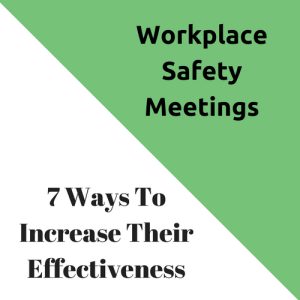Retractable Lanyard Training Acknowledgement
 With over 40,000 workers injured annually due to fall accidents, falls in the workplace present a major risk for employers and workers. The ideal method of fall prevention is to eliminate all potential fall hazards, but this is not a realistic solution for most workplaces. Fall prevention systems like guard rails and barriers are not always practical depending on the work-site and nature of work being performed. If fall prevention is not possible, fall protection measures and training are the best way to protect yourself in the event of a fall.
With over 40,000 workers injured annually due to fall accidents, falls in the workplace present a major risk for employers and workers. The ideal method of fall prevention is to eliminate all potential fall hazards, but this is not a realistic solution for most workplaces. Fall prevention systems like guard rails and barriers are not always practical depending on the work-site and nature of work being performed. If fall prevention is not possible, fall protection measures and training are the best way to protect yourself in the event of a fall.
Fall arrest systems work by protecting workers by stopping (or arresting) them in mid-fall. An effective fall arrest system uses harness, anchor, lanyard, and lifeline components to secure the worker to a stable working surface in order to lessen the impact to the worker in the event of a fall. The goal of the fall arrest system is to absorb the energy of the fall so that the force of falling is not applied to the worker.
The essential elements of a fall arrest system include: a harness, a lanyard, and a lifeline. Regular inspection of these elements is critical to ensure that they’re in good working order and can perform their functions in the event of a fall. When checking the harness, ensure that the hardware and straps are not worn, that there are no twists or tears in the fabric, and that all parts can move freely. For the lanyard, you want to check that the rope is in good condition, that the harness attachment is secure, and that there is no wear or damage to the hardware and shock-absorbing fabric. In the case of the lifeline, you again want to check for any wear or deterioration and ensure that the retracting function operates smoothly. Any parts of the fall arrest system that show wear, or are not performing to specification, should be replaced before use.
If you need more components of a powered equipment program, check out what I offer here
If you plan to be working at heights, fall protection training is required by state and provincial law. There are courses specifically designed to provide participants with the training that they need to make safe decisions when working at heights. Fall arrest courses are typically one day in duration and provide a combination of classroom and hands-on training covering topics like: the dynamics of falling, fall protection systems and planning, fall arrest system components, harness fitting, equipment care and inspection, and rescue procedures. Fall arrest training is affordable for workers and employers, and typically costs around $200 for a one day course. Excellent online courses are also available for around $60.
Falls are preventable and the injury resulting from a fall can be mitigated through proper fall arrest equipment and training. Before working at heights, make sure to arm yourself with the training and knowledge you need to work safely.
Download & view the Retractable Lanyard Training Certification below:
Retractable Lanyard Training Acknowledgement


















 Have you ever wished your workplace safety meetings were more interesting, more engaging, more productive, and more rewarding?
Have you ever wished your workplace safety meetings were more interesting, more engaging, more productive, and more rewarding?